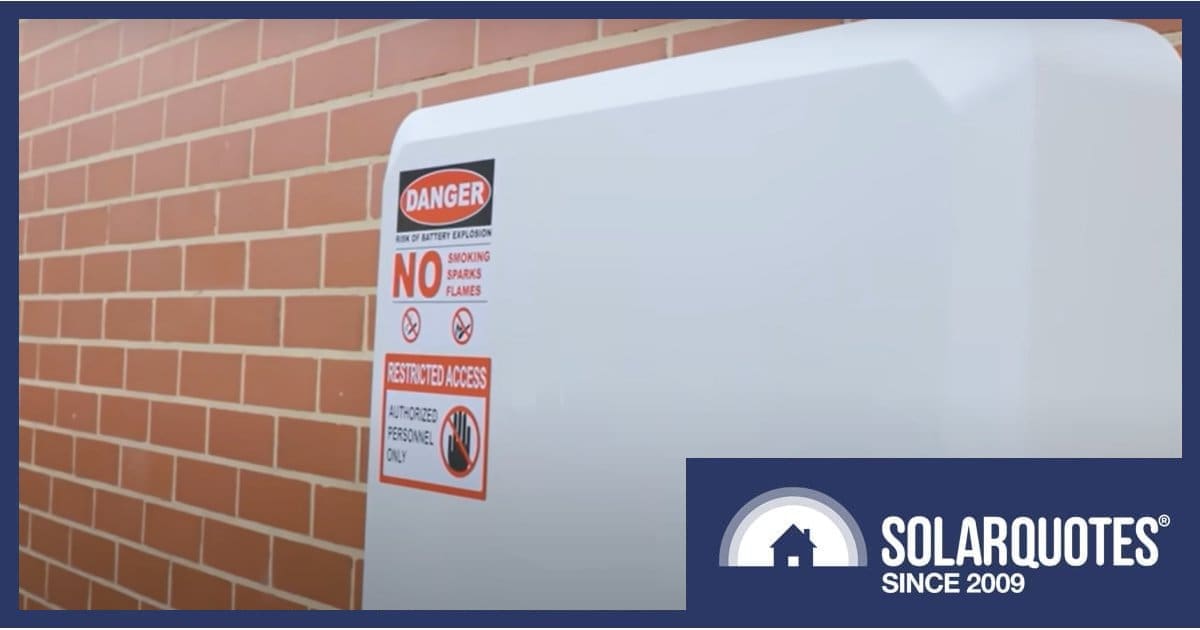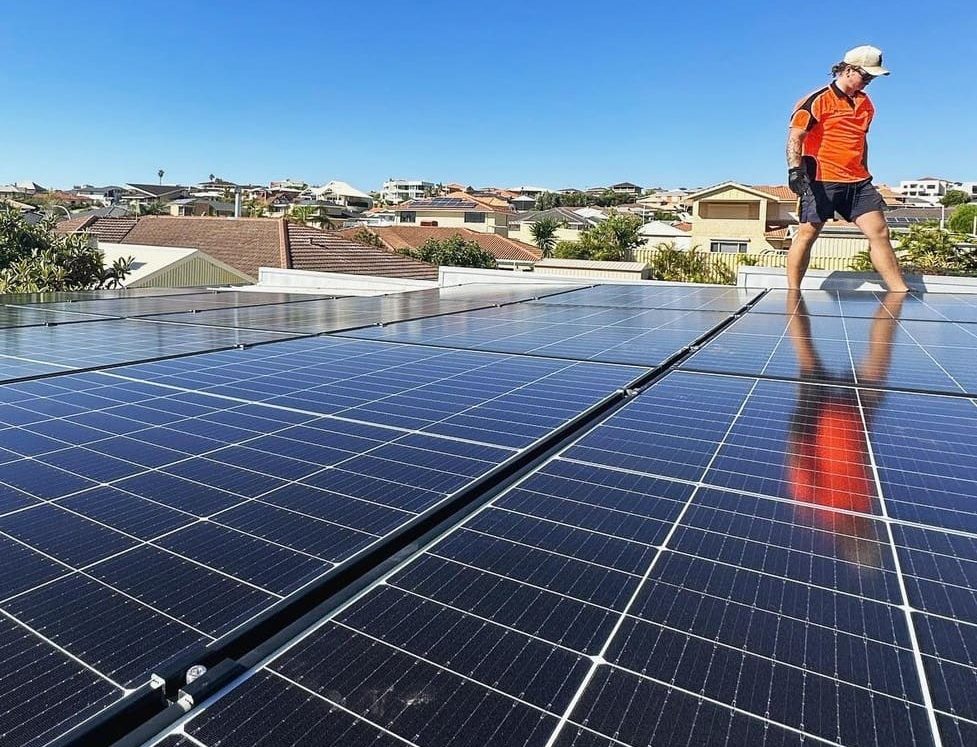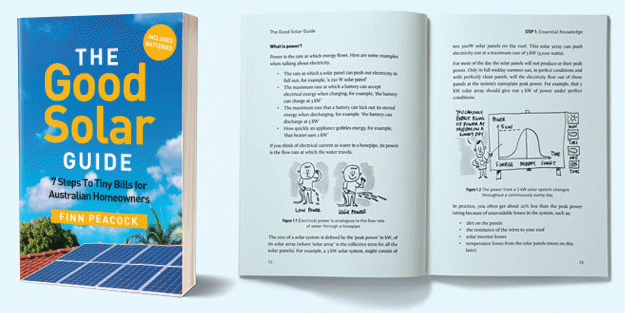 Labor’s Cheaper Home Batteries Program only begins in July, but a promise that Australians can get a battery now and claim the rebate later has triggered a rush on installers. There’s just one problem: the rebate technically doesn’t exist yet, and neither does the fine print. Here’s why you should tread carefully.
Labor’s Cheaper Home Batteries Program only begins in July, but a promise that Australians can get a battery now and claim the rebate later has triggered a rush on installers. There’s just one problem: the rebate technically doesn’t exist yet, and neither does the fine print. Here’s why you should tread carefully.
Retrospective Rebate Risks
The scheme is only set to kick off July 1, but Labor has promised that it will retrospectively apply to batteries installed since the plan was first announced during the election … provided you don’t turn the battery on.
One of the many questions yet to be precisely defined is what “turning it on” exactly means: is it the first time the battery is being properly used, or does it even include a standard test by the installer to see if the battery is actually working?
We don’t know the fine detail you’ll need to get a firm quote, but that’s not stopping brave retailers from making exceptional offers.
The operative word means either they’re overconfident, desperate for cashflow or relying on fine print exclusions to sign up unsuspecting or excited customers.
The devil is always in the detail, so if you go early, you or your solar retailer need to accept some risk.
Labor’s plan is to present an exposure draft of the new regulations and offer two weeks consultation during May or June. Once the details are locked in, Bowen or potentially a new energy minister can sign off and we’re all good to go for July 1.
The program is based on the use of Small-scale Technology Certificates (STCs), using the administrative infrastructure, digital platforms and mental furniture of the existing solar panel rebate we all know and love.
With no legislative change, there’s no risk of diabolical delays because nobody in the Senate gets to apply any ideology. A simple change in regulation, signed by a newly minted minister, is all that’s needed.

Labor ran hard during the election on the promise of cheaper batteries. Contrary to what this ad featuring Labor politician Mark Dreyfus claims, the amount saved could be higher or lower depending on the battery.
The Industry Is Getting Ready
If you are keen to try and get a battery installed before July 1 and still claim the rebate, the industry is working out solutions.
Sigenergy has already organised a software fix so their “all-in-one” hybrid system can be physically assembled with the battery in place, but the battery itself can be locked out.
Other hybrids can have the battery physically disconnected or isolated, however it will vary by model or brand as to whether the software activation can be managed remotely, or if an electrician needs to attend the site after July 1st to reconfigure whatever is needed.
Formbay – one of the key platforms for managing STC claims – has opened the door to start “creating” battery jobs and collecting site data alongside the existing processes needed to claim STCs for solar. They’re getting ahead of the game by offering both claims in parallel.
Your installer can do all the work, but shouldn’t commission the battery system or submit a claim yet.
There will be double the usual administration but it should work like this:
- Battery STC jobs must be submitted separately from solar ones (for now)
- Installers will be able to commission the solar straight away and activate the battery later
- Installers will need two lots of evidence, paperwork and data collection
- Battery STC jobs must remain “in progress” until July 1

Some specifics on getting solar at the same time as a battery are yet to be made clear.
Other Unanswered Battery Rebate Questions
- Batteries must be at least 5kWh, but the battery-to-solar size ratio is yet to be determined, with preliminary discussions underway aimed at preventing large batteries being sold for installations with little solar.
- We don’t know how solar will be claimed for a battery system that isn’t technically commissioned. Pragmatism says it’s on site and connected, but it’s a question we’re seeking clarification for.
- For folks in NSW, time and resources have been devoted to refining NSW’s scheme to harmonise with the federal rebate, including consideration of whether to remove NSW’s 28kWh cap, but until NSW updates its rules you can’t currently claim both the federal battery incentive and the state’s rebate.
Should You Install Your Battery Now?
One consideration is reports that installers are already jacking up prices in response to the rebate. So if you’re thinking of installing a battery now and just flicking it on late, it’s quite feasible. The government has told us this is the aim.
Some installers may ask the customer to pay the full price now, and refund the rebate after it comes through.
This isn’t unreasonable, as cashflow is going to be a real concern to small and medium enterprises who are ordering lots of expensive stock to meet this new demand.
A number of installers are worried this will turn into another “debacle” seen with the NSW state incentive – where arduous compliance and government audits tie up cash and throttle how many systems can be done each day.
Right now, there’s no confirmation from the Clean Energy Regulator about how many federal rebate battery jobs an installer can claim per day, but solar STC rules currently limit a qualified installer to signing off no more than two jobs daily.
In any case, I would be dubious about deals offering the incentive up front, because the business willing to take that risk might not be one that’s thinking about long-term profitability.
Find Out Exactly What You Need
There’s every chance this program will be a boon eventually. But right now, it’s better to measure up. Inquiring minds can use their own utility meter data to calculate the exact battery capacity needed.
Or start with our list of the best batteries to install under the rebate, check it against our rebate calculator, and find out where you can actually install it.
The market is excited. There’s talk of surging demand, and some forecasts predict big growth in large home and commercial systems.
For now, we are watching closely and will offer updates as they come to hand. Stay tuned.

 RSS - Posts
RSS - Posts



I have 2 x Powerwall 2’s installed here. A third at the right price would be good, but not sure if PW2 is readily available any more?
Hi John,
I understand some new PW2 are still around if you search.
However I expect some will also turn up second hand, as for instance early adopters but in larger 3ph systems.
I understand that the Powerwall 2 STC certification expires on 1st August so they won’t be eligible for the federal rebate after that date. That is, it must be turned on between 1st and 31st of July! (subject to the caveats in your article)
We already had solar (10.5kw) and we’re talking to the guys that fitted it about a battery when Albo announced the rebate we have paid a deposit on a battery with the rebate included in the price so now we wait for the install. Hoping that nothing goes sideways.
we were due to have extra solar and a battery installed the Monday after the announcement. Our installer rang us that morning (Solar Wholesalers) to discuss the implications. we agreed to go ahead with the install but not to commission the battery. No guarantees of a rebate were given but waiting a couple of months could get us around $4,000 rebate we were not expecting.
We agreed to withhold just $500 for the later commissioning, after all we had all the gear installed.
We were never going to save that much by having it switched on and the extra solar is helping anyway.
Good on the installer for being on top of it straight away and offering options to us.
Solar Wholesalers are good eggs.
Just a general question, not related to batteries.
Are there any plans for devices that can isolate the grid during a blackout and allow solar to power part of the home, from the inverter?
Hi Stewart,
Basically every hybrid inverter available now will do that, but you need a battery for storage.
While some have simply shifted energy in the past, relying on the grid to maintain frequency, you could usually specify “blackout protection” as an extra.
If you want backup without a battery, get a Fronius Gen24 and make sure they include the “PV point” option.
It’s ideal for charging phones or running up to a 3kW load but relies entirely on good consistent sunshine to keep up the output.
Is the rebate per household, or per property, or per home owner, and what happens if you buy a house that already had the rebate applied by the previous home owner etc?
Hi Jake,
I couldn’t tell you about the eligibility sorry.
As to wether it’s applied to the NMI, a natural person or the property title I’m not sure.
For solar STCs there has been no issue with the same or different owners installing, replacing or extending solar arrays.
However I believe there have been some problems with STCs claimed across large commercial installs where the power is supplied to one address and the roof on which the panels are installed might techincally extend across property titles.
This is all well and good, but looking at “The Best Batteries To Buy With Labor’s Rebate” Seems to imply that these are the only batteries available.
By all means review and list them, but are these the ONLY batteries? One of the conditions ( as I understand it ) is the battery MUST be CEC approved ( listed) AND it must be capable of be configured to work with a VPP, even if you have no intention of going with VPP.
That to be is something that should be pointed out and secondly, how to determine if a battery is VPP capable, unless I have misunderstood.
Why should non-VVP compliant/capable batteries be discriminated against? I know its the Govt’s game and they have the ball, but it does seem to be a little anti-competitive and I would ask you to challenge this so as to make the choices wider – even if they don’t fit into the SQ best battery for solar list.
I got a quote for a 16kwh SigenStor just over $17K installed before any potential rebate.
Is that a reasonable price? First quote so will be getting some others to compare.
2 x 8kwh, seems a decent price, SQ has it in the battery comparo table . . .
https://www.solarquotes.com.au/battery-storage/comparison-table/
$7600 for 8kwh, so $15k odd + install, your quote is on the mark.
Where abouts are you located Tim, State? Suburb?
Brisbane
$1 per Wh installed is reasonable in Australia.
How sure are they that the rebate will be 9.3 STCs?
Has that been 100% confirmed?
Nothing has been written into law.
Solar Quotes said the factor is 9.7 earlier. 9.3 is derived from the $370 divided by the $40 ceiling price, or $39.90 spot price, for STCs.
I am not sure where they got 9.7 from but very plausible that is the real figure and $370 comes from a payout price after regulatory and processing fees etc. of $38.1 per STC.
I’ve paid a deposit for a 15kw battery to be installed about June. The installer has included the Federal STC rebate in the quote which will be applied at installation. Fingers crossed it all goes to plan. I wanted to beat the rush.
What do you think would happen if they brought in a solar panel to battery size ratio that my planned system exceeded? This really should have been clarified already if they wanted to avoid the confusion of the NSW rebate.
People act on emotion and justify with logic. They want battery and Labour’s promise is just an excuse to get it. Yesterday, despite me telling them I need HV modules from the same branch, the installer arrived with 3 different batches as if they already scraped the bottom of the barrel. The choice was to take it or they may come in some distant future when they have a window and batteries from the same batch. Likely I will have to pay extra as common sense of same batch modules is not a part of the contract.
That evening I received email from Sungrow saying “Although it is better to receive the battery modules in the same batch, they can still be installed even if they are from different batches, provided that SOC balancing is performed…” Taken the charge status of the modules the installer left it to be ‘charged’, so I had to disconnect the battery not to ‘use it’ during night and turn it on in the morning to charge and SOC to balance if it ever does with this cocktail of batches
If go to https://duckduckgo.com/?q=DuckDuckGo&ia=chat and ask “what are problems with putting different batches modules into the same HV battery” I receive 7 points reply which is too long to be published here.
The installer told me that I am the first to request the same batch modules. Based on Sungrow response and 7 points ChatGPT gave me, installers just abuse customers’ incompetence by installing inferior batteries configurations.
Am I missing something?
Also, am I in contempt of Labour’s rules by charging the battery and attempting to equalise the SOC?
Check out electric Vikings video on v2g for a story its on YouTube
Just because it doesnt have to go through parliament doesnt mean that some sort of deal to get support for other legislation wont be done as to what the scheme looks like in regards to eligability, size, etc.
The risk of significant chances are small, but remember even though decimated at this election in the lower house, the Greens still hold the balance of power in the senate, and they had specific ideas of their own about what a battery scheme should look like, which they may push as part of any deal for support for supply or other legislation in the senate.
I suppose the answer is to either wait 7 weeks or take a minor risk.
Personally I upgraded my battery in size 2 weeks after labor announced their plans, i wanted the bigger battery, I had reserved the money for it, I had already booked the job.
I didn’t want to turn off my entire battery for 3 months (no details on any other acceptable way of not turning on addition modules in a modular battery were forthcoming).
One aspect of the delay before implementation, is that it gives us, the prospective customers, sometime to do a bit of research.
For example, I am waiting for Sigenergy to clarify whether their all in one inverter/storage systems, include export limiting functionality, and, with all of the optional extra components required to get full functionality (backup functionality requires an optional extra component, we need to get an idea of the total pricing for a system that comprises of “optional extras” to get the full functionality.
And, with Sungrow, whilst the SBH250 battery stack works with the single phase inverters, but, apparently limits the single phase inverters to a maximum of 25kWh of BESS capacity, will the single phase inverters be capable of driving two SBH250 stacks, to take full advantage of the limit of 50kWh?
I have contacted the manufacturers’ representative in Australia, with the questions. waiting, waiting, waiting….
Then, the pricing needs to be determined.
I have a quote from an installer from January this year and opted to wait for the rebate.
For the same system the price rose by exactly the amount of the rebate the weekend after the election.
Well done Australia
Hi John,
We’d be happy to see the quotes involved if you’d be good enough to send them.
So far I’ve seen this claim a couple of times but it’s not been substantiated.
I can confirm that our company has not increased prices in response to the rebate. This incentive is intended to benefit consumers directly, and where material costs remain stable, so too do our prices.
We believe businesses should use the rebate as an opportunity to grow through increased sales volume, rather than by inflating margins.
“Batteries must be at least 5kWh, but the battery-to-solar size ratio is yet to be determined, with preliminary discussions underway aimed at preventing large batteries being sold for installations with little solar.”
An interesting aspect to that, is this.
We have a 5kW inverter, with 8.36kW of panels, and a 19.3kWh BESS.
During the less sunny days, generation can fall to as little as around 4kWh in a day.
I got us on Time Of Use Charging, which means that, between 0900 and 1500, we get charged about a sixth of the peak period of charging, and, about a quarter of the shoulder (?) period of charging. So, I have the forced charging set to fully charge the BESS, between 1200 and 1500, which reduces the grid electricity bills (I believe) significantly.
Increasing the BESS capacity to 50kWh, could be better for both electricity costs and for extended backup, for us, and, for grid energy arbitrage, depending on pricing for the upgrade.
There is a lot of information out there around having batteries installed prior to June 30 but not turned on, including from you guys. Now you come out with this article. Tells me you know something we don’t? Surely it can’t take much longer to have the finer details? I have paid a deposit on batteries but I am delaying any install as long as possible.
Hi Like,
We publish what we know but as it stands the regulations simply aren’t written yet.
Any thoughts about Enphase batteries for people with enphase systems
Cheers
Enphase are lovely.
But the batteries are bulky.
With 5kW inverter for only 5kWh storage you’ll eat up the allowable DNSP connection capacity quickly with only a 10kWh battery.
And they’re expensive.
(However I think they have an EV charger available as well so that’s handy?)
I am not making any money exporting electricity, so I am not so sure how this stuff to be taxed. I’d expect it quite complex taken you’d need to involve capital costs and depreciation. I just prefer to keep away from small financial gains to keep my tax affairs simple.
The scale of the solar uptake is already so large that those bourgeois owning their own energy plants are overdue for milking. Turning the batteries on the first day if a tax year is a telling sign, as well as magic 30% consistent with a tax rate.
Anyone is already paying tax on their energy exports?
re Battery Calculator above – no way to add in effect of adding extra solar panels along with the battery? Limits the Calc’s usefulness …
With the requirement that the battery must be VPP capable/compliant, does the battery have to be recognised by your states VPP providers ( EG in SA: AGL, Engie, Tesla etc) or can you use a battery that is on VIC’s list of reconised VPP batteries but not in your state ( SA ) ?
Good question Warwick,
I can’t see that a federal scheme will mandate particular VPP plans or providers but we haven’t got anything in writing yet.
It would be a most interesting article for you guys to compare prices before the scheme and after so that we can see where the benefit ends up – in the hands of the home owner, the installer or somewhere further up the chain.